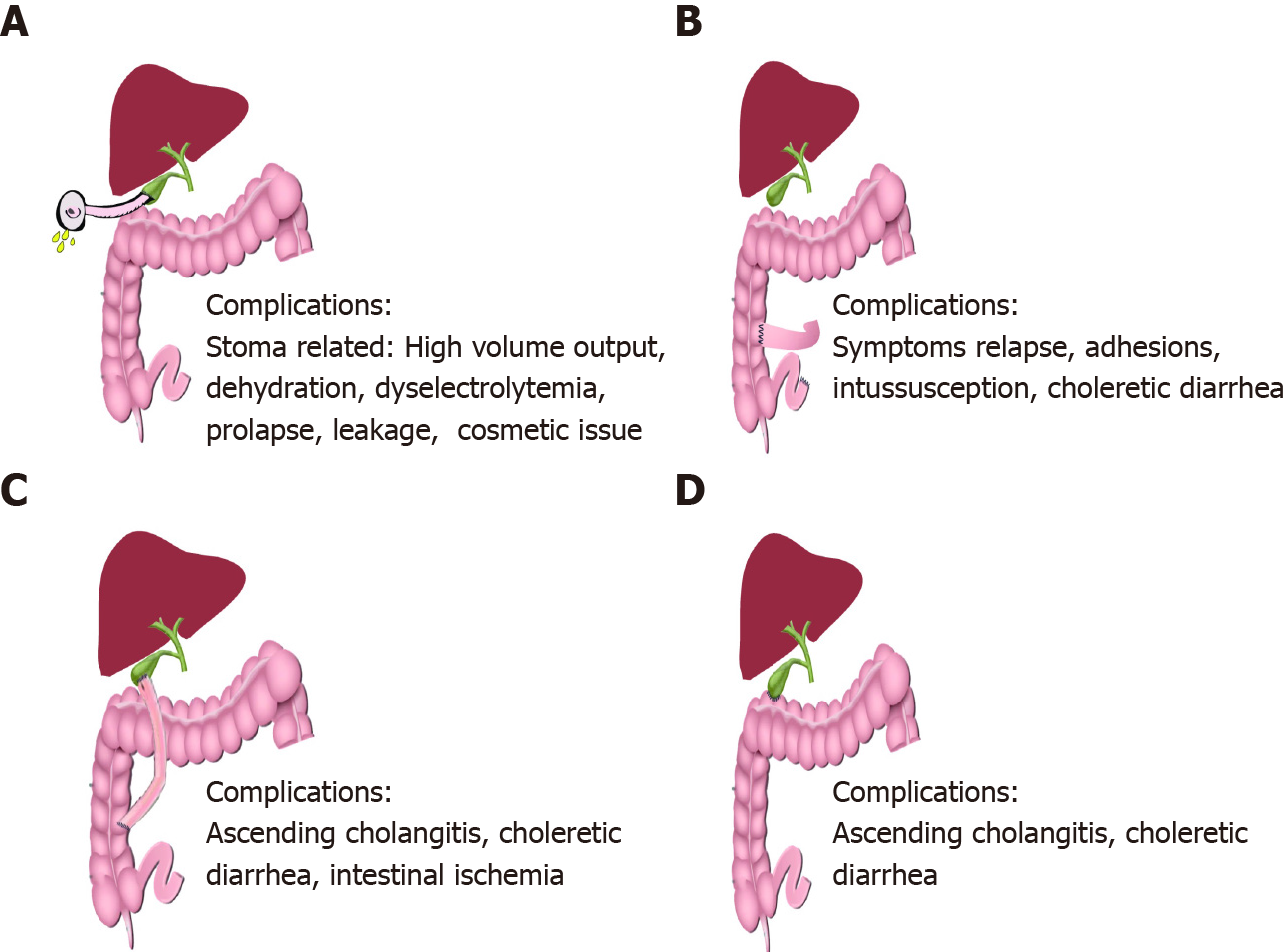Copyright
©The Author(s) 2021.
World J Hepatol. Jan 27, 2022; 14(1): 98-118
Published online Jan 27, 2022. doi: 10.4254/wjh.v14.i1.98
Published online Jan 27, 2022. doi: 10.4254/wjh.v14.i1.98
Figure 4 Schematic representation of biliary diversion surgeries.
A: Partial external biliary diversion: A conduit of around 15-20 cm is made from gall bladder to an exteriorized cutaneous stoma using a jejunal conduit. This conduit diverts a variable (-50%) proportion of bile away from the intestine into the connected stoma bag which needs to be emptied regularly; B: Ileal exclusion (IE): IE involves formation of an end to side ileocolonic anstomosis in such a way that the terminal 15% of ileum is excluded, hence drastically reducing the enterohepatic circulation. The proximal end of the resected ileum is sutured to the colon around 5 cm distal to the ileocecal valve; C: Partial internal biliary diversion (PIBD): The most common technique of PIBD is a cholecysto-jejuno-colonic anastomosis. An isolated jejunal conduit of around 12-15 cm length is created and anastomosed proximally to the gallbladder and distally to the mid part of the ascending colon; D: Another commonly used technique of PIBD is cholecysto-colostomy where gall bladder is directly connected to the transverse colon to partially bypass the terminal ileum.
- Citation: Alam S, Lal BB. Recent updates on progressive familial intrahepatic cholestasis types 1, 2 and 3: Outcome and therapeutic strategies. World J Hepatol 2022; 14(1): 98-118
- URL: https://www.wjgnet.com/1948-5182/full/v14/i1/98.htm
- DOI: https://dx.doi.org/10.4254/wjh.v14.i1.98









